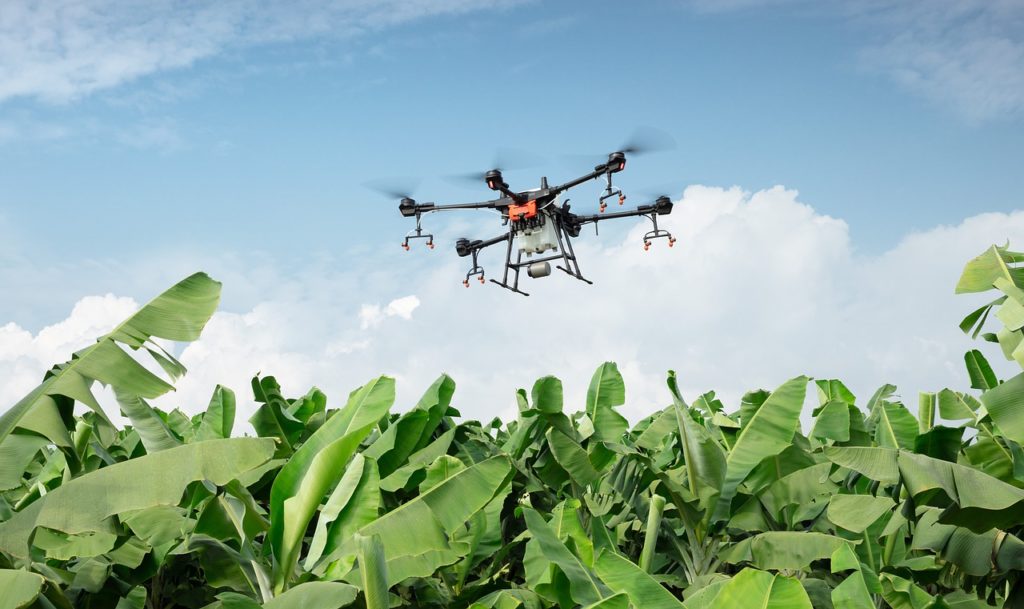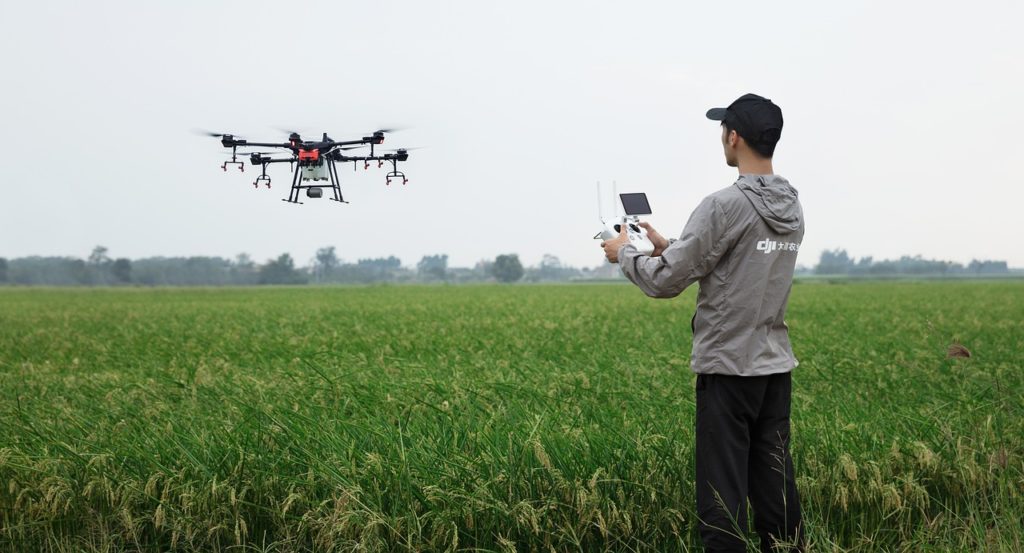What is precision agriculture?

Even though technology seems almost unavoidable in the current day and age, farming still has a reputation for being low-tech. Precision agriculture aims to change that by using technologies like sensors and drones to help farmers improve their yields.
“The main objective [of precision agriculture] is to maximize the efficiency of your inputs, which maximizes profitability and minimizes environmental impacts,” said Kendall Kirk, precision agriculture engineer at Clemson University’s Edisto Research & Education Center.
Kirk said that precision agriculture includes any use of sensors in agriculture, including sensors on aerial platforms like drones and in-ground soil moisture sensors. The data collected by the sensors help to optimize the inputs and outputs of a given agricultural system.
“We’re focusing on placing crop inputs at the right place at the right time in the right amount,” Kirk said.
Keith Coble, professor of agricultural economics at the Mississippi State University Extension, studies how the data gathered by precision agriculture can be best utilized on real-life farms.
“As agricultural economists, we’re focused on trying to figure out with of all this data that comes your way as a farmer, how does one use it to make better decisions,” Coble explained.
The benefits of precision agriculture
Precision agriculture increases the efficiency with which farmers use tools like fertilizer and, thus, decreases costs over time.
To illustrate, Kirk used the example of a farmer fertilizing a hayfield.
“Rather than put it out [at] a uniform rate, precision agriculture allows you to put 8 pounds over there, 100 pounds in the middle [and so on],” he explained. “Maybe it is an average rate of 100 pounds [per acre], but you put more where [the hay field] needs more and less where it needs less.”
Using inputs like fertilizer and water more judiciously also helps the environment.
“When a grower uses their fertilizer more efficiently, the environment also wins,” Kirk said. “If they save money because they irrigated less, then we pump less groundwater, so the environment wins there, too. When a grower saves money, we’re also doing good things for the environment.”
Coble said large farms have effectively applied precision agriculture techniques to minimize inputs and maximize yields. The trend may soon catch on at a smaller scale.
“A lot of the leading technology has been applied to the big field crops, but you’re also going to see more and more of this being targeted to high-value crops [on smaller farms] as well,” Coble said.
In the future, precision agriculture may even lead to inputs like pesticides being precisely applied by robots instead of manually.
“That’s really not here yet, but a lot of people are talking about the fact that if you have a remotely-controlled robot going down the row only spraying herbicide when it sees a weed rather than spraying on every inch of that acre, that will make a difference,” Coble said. “[Precision agriculture] will let [farmers] manage more precisely and reduce applications.”
The challenges of precision agriculture
Precision agriculture requires some upfront capital cost for tools.
“Investing in these technologies requires a capital input,” Kirk said. “That’s the driving factor from a grower’s standpoint. The industry provides different levels of packages for small, [medium] and large growers.”
Just as important as purchasing the tools for precision agriculture is learning how to use them properly.
“It’s a bit of a learning curve,” Kirk said. “On some level, there is a need to understand [geospatial information systems]. There’s farm management software that makes this a little bit easier.”
Even if you have the tools and knowledge, capturing quality data can be challenging.
“We have these huge volumes of data, but sometimes the data is of poor quality,” Coble said. “[For example, if the] yield monitor is poorly calibrated, you’ll get poor quality information coming out on the backside.”
As such, figuring out how to best use that data is an on-going process.
“One of the challenges is to figure out overall this volume of data that can be collected,” Coble said. “It’s really a question of can that data let me do that better, or more accurately, or more timely than I would have done otherwise.”
Is precision agriculture right for small farmers?
Though there are some upfront capital costs to precision agriculture, they are not necessarily prohibitive for small farmers and homesteaders.
“With a $30 GPS receiver and $100 tablet, you could get into this,” Kirk said.
“A drone is fairly inexpensive,” Coble said.
Even so, Coble warned that small farmers still may not find that cost worthwhile. He said that the return on investment for precision agriculture depends, in part, on what you are growing.
“If you’re growing fruits or vegetables that have a higher value per acre, the equipment might be more valuable than for a lower-value crop like wheat,” Coble said.
It also depends on the geography of your land.
“The ability to do variable rate applications is going to be valuable when the field is not homogeneous,” Coble said. “If you have a lot of variation in the slope [and] soil type, insect pressure that might strike part of the field but not all of the field. If your field has very little flow and all one soil type, I don’t know that precision agriculture is going to make as much of a difference.”
Coble advised farmers to carefully weigh the costs with the benefits of precision agriculture before spending their time and money.
“I think [you] need to look at the cost and then how’s it really going to make a difference on your farm,” Coble said. “Is it going to let you handle disease pressure better than you could by just driving down the rows? Then do it. If not, don’t do it. I wouldn’t want a small producer who isn’t going to make money from [precision agriculture] to adopt it just because it is the cool new thing.”

What do I need to start doing precision agriculture?
The tools you need to start applying precision agriculture on your farm or homestead will depend on your goals. Kirk said that there are some tools that are universally useful, like soil moisture sensors and electrical conductivity meters.
“All of our crop production the foundation of it is the soil,” Kirk said. “One tool that we like to use a lot to define zones for management is a soil electrical conductivity meter. It’s actually a cart that you pull behind a truck or a tractor and it measures the electrical conductivity of the soil.”
It can be challenging to find tools technology for a small-scale farmer, though.
“I think most of what industry, the larger companies try to put on the market are not targeted to smaller farmers,” Kirk said. “I hope that this industry will provide some tools for them if they don’t exist.”
Still, Kirk is hopeful about the development of more precision agriculture tools and applications for small farmers.
“There are still ways for [small farmers and homesteaders] to take advantage of some of what we learn in precision agriculture to improve management,” Kirk said. “I think there is a place for them.”
